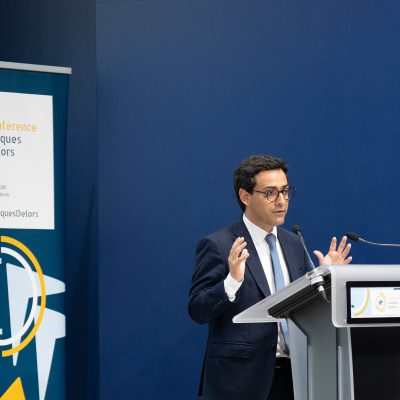An ambitious recovery budget, tough negotiations ahead

On May 27 the Commission unveiled its amended proposal of the EU’s seven-year
Multiannual Financial Framework (MFF) for 2021-2027. The backbone of the proposal is the latest ‘negotiating box’ put forward by the President Charles Michel in February 2020, amounting to €1.1 trillion. This is topped-up with a temporary €750bn instrument, called ‘Next Generation EU’, which almost doubles EU spending for 2021-2024 with money raised on the financial markets.
The overall package is impressive. It is not only very ambitious in size but truly innovative as it foresees for the first time in history a massive emission of common EU debt to finance EU expenditures. From a macro-economic perspective, providing a common budgetary response to the crisis and delaying its repayment beyond 2027 makes a lot of sense. The fact that the Commission proposes to disburse most of the borrowed money in the form of grants rather than loans and to focus the support on those countries and regions most in need is also important to prevent the crisis to increase divergences and undermine the Single Market. Last but not least, the idea of creating new Own Resources to help service the debt is a politically attractive argument even if it is doubtful that this will suffice to change Member States´ traditional reluctance to reform the revenue side of the EU budget.
In the coming months we will see if the Commission’s proposal survives the negotiations in good shape. There is much consensus that reaching an agreement will be very difficult, and some countries may try to reduce the ambition of the package. However, the success of the plan will depend as much on its overall size as on how the money will be spent. In this respect, there are some details that may be object of discussion in the context of negotiations.
First, despite the urgency of the situation, only a very small part of the recovery effort (€11.5bn) will be spent in 2020. This is of course very regrettable, but it should be recognised that doing otherwise would have been difficult. Frontloading a bigger part of the recovery effort by raising debt would have required a temporary increase of the Own Resource ceiling and thus the ratification of all national parliaments. The Commission has preferred not to follow this path and opt for a moderate increase of the 2020 budget, which only requires a unanimous vote in the Council and the consent of the European Parliament.
Second, almost three quarters of the recovery grants (€310bn) will be channelled through the so-called “Recovery and Resilience Facility” to support Member States’ recovery and resilience plans. This makes sense, as EU-level support will be more effective if tailor-made to each countries’ needs and circumstances. However, whereas the main rationale for this type of EU support is to prevent further divergence stemming from the asymmetric impact of the crisis or the differences in national recovery capacities, grants under this Facility will be distributed according to an allocation key based on population and pre-crisis GDP and unemployment levels. Neither the socio-economic impact of the crisis nor the differences in national fiscal positions will be taken into account.
Third, a much-welcomed step is the creation of a new programme called “Solvency Support Instrument” which will provide capital support to sound firms struggling as a result of the crisis. Managed by the EIB, the Instrument is expected to focus on the Member States most economically
hit by the crisis and/or where national solvency support is more limited. However, the regulation explicitly excludes the establishment of geographical quotas and leaves wide discretion to the EIB in ensuring an appropriate distribution of funding across Member States.
Fourth, the MFF communication put a lot of emphasis on the need to align the recovery effort with the European green deal. However, in some programmes (REACT-EU, the new Solvency Instrument) the draft regulations are vague on how to ensure this alignment. In others (the Recovery and Resilience Facility), the procedures are detailed but look insufficient. A national recovery plan which does not plan to have a strong impact on the green transition can be still adopted as long as it significantly contributes to the digital transformation.
Fifth, it is also important to highlight the enormous implementation challenge that lies ahead. Many countries which have already difficulties to disburse cohesion policy funding on time will struggle to implement the extra money, all the more if tough reform conditions are attached to the disbursement of the funds.
Sixth, we should not forget that the package includes the ‘standard’ MFF. The Commission has shown political realism in building on Charles Michel´s MFF proposal rather than its own May 2018 version, which was more ambitious in size. However, the “negotiating box” presented by President Michel in February 2020 left many issues unresolved. Besides, some of the amendments proposed by the Commission (such as a slightly increase of agriculture spending) may be controversial.
Whether these various questions will be constructively discussed in the negotiations or will constitute points of blockage is unknown. It t is hard to assess the prospects of this exceptional Recovery package by relying on our knowledge of classic MFF negotiations. We’re in exceptional times, and this may also affect negotiation dynamics. A failure to agree on the recovery package would send a very negative political signal to the world. Let’s hope that member states as well as the European Parliament acknowledge this fact and behave in a particular constructive and responsible way.




